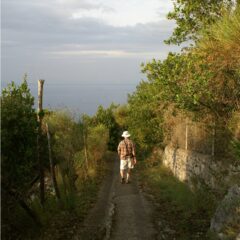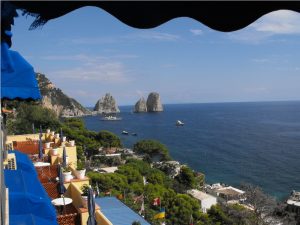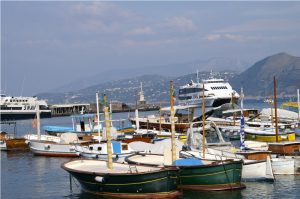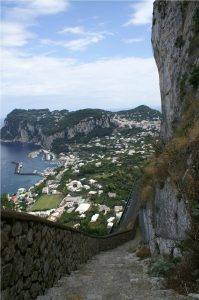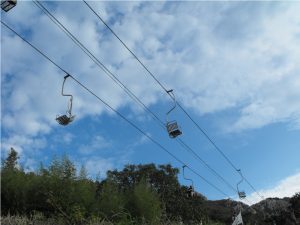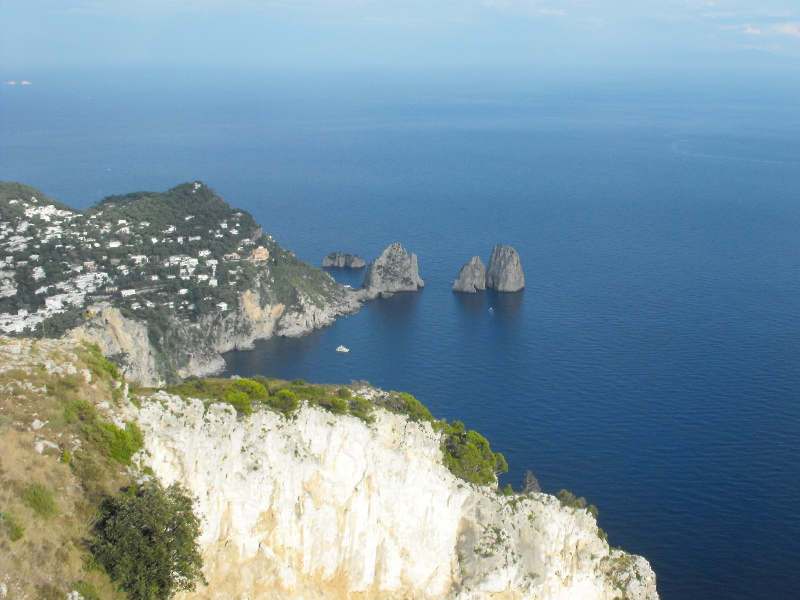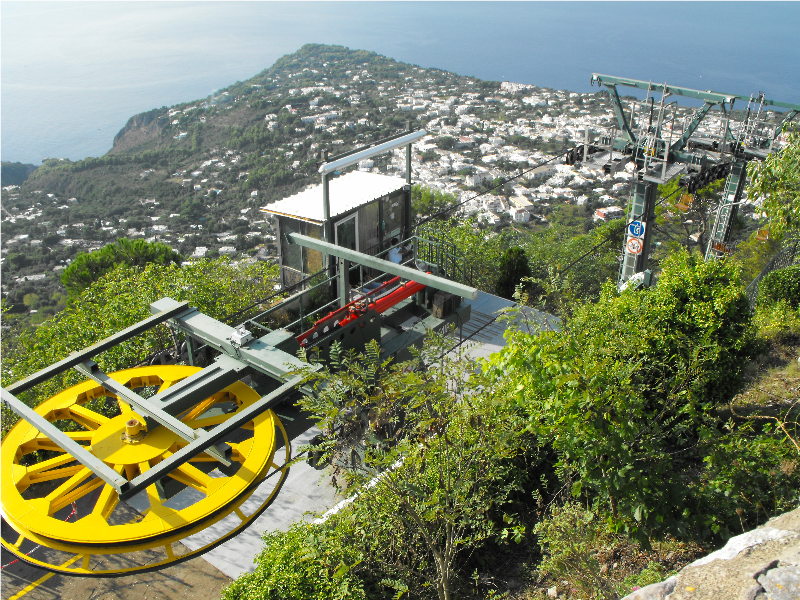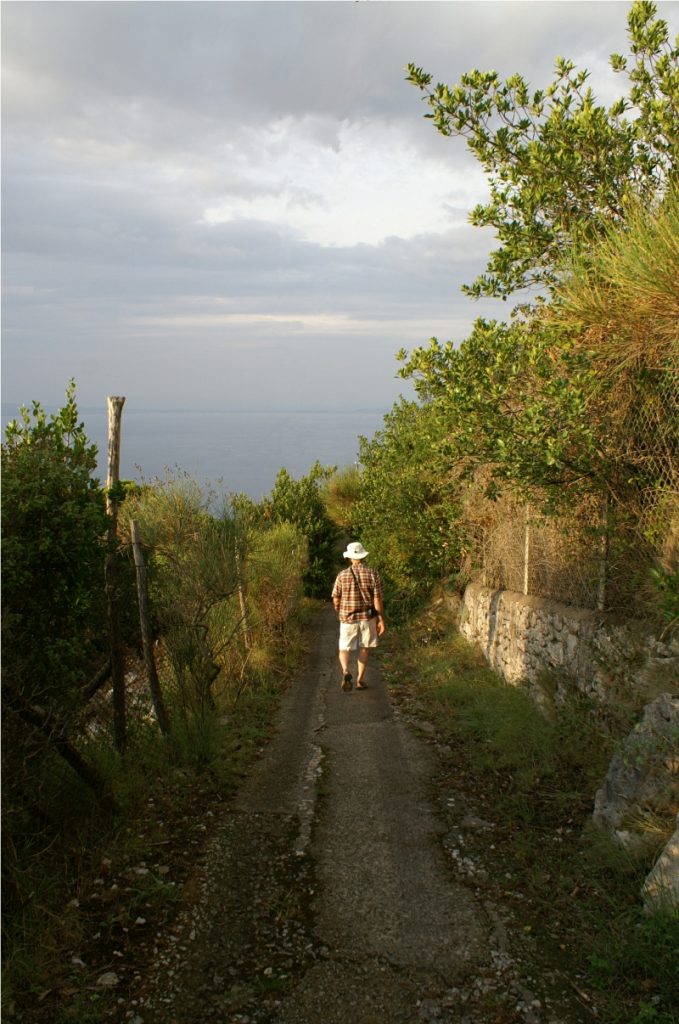In the summer of 1967, two young women were killed by separate grizzly bear attacks on the same night in Glacier National Park. When you hike or backpack the Highline Trail to Granite Park Chalet you will be visiting the site where one of the incidents took place. Prior to that time, watching the grizzlies forage through the trash and food scraps discarded by the Chalet into a nearby ravine was considered suitable amusement for the overnight guests at the Chalet. In fact the Chalet had even set up lights in the ravine so that the guests could see the bears better. The entire story of the night is told in the book The Night of the Grizzlies by Jack Olson.

We began our hike to Granite Park Chalet at the intersection of the Highline Trail and the Going to the Sun Road at Logan Pass. Although it was July, you will see snow in pictures and the road, which traverses Glacier National Park, had only opened in late June. Glacier sits astride the Continental Divide and the water from the winter snows flows east to the Gulf of Mexico, west to the Pacific Ocean, and north to the Hudson Bay. The Highline Trail hugs the sky just below the Contiental Divide. As you begin hiking you are on a narrow ledge of a trail across the Garden Wall and at times feel suspended between heaven and earth, but the trail is mainly level without significant changes in altitude, so the walk is exhilerating. You are hiking at about 8000 feet above sea level almost all the time.

Mary, the Seer, takes all the great photographs in this blog and with her camera in her hand she knows no fear. Neither height, nor wind, nor wild animal can deter her from getting that shot. Along the Highline, we had all of the above. After hiking for a while, we came to a pass that was still covered with snow, but it had melted down to where the snow was only about a foot deep and had become well packed. We carefully picked our way across the snow circling around a projecting formation known as Haystack Butte. As we made our way between the high ground of the Continental Divide to our right and Haystack Butte, Mary whispered, “look!” Before I could say be careful, she had slid her backpack to the ground and had the lens cap off her camera, already walking across the packed snow toward the long slide down to the Going to the Sun road. And there, right in her viewfinder was the magnificent Bighorn Ram in the picture below.

The ram was, of course, too smart to really get himself into danger, so after a moment of teasing eternity, he turned and walked back toward the area where the snow had melted, never in a hurry and never showing any real concern for the hikers. Finally, he turned and posed for Mary to get the shot she wanted, and we moved on down the trail.

Granite Park Chalet is about 7 to 8 miles along the trail from Logan Pass and the picture below is probably close to half way there. It was along here that we encountered the first of many mountain goats. Each was a female with a kid. The kids, in each instance only a few weeks old, skipped over the steep slope as if it were a living room carpet. Of course, while the kid was playing at a distance Mary got up close and personal with the mama’s. As you can see, the mama has a face only a kid could love.

The Highline Trail is above the tree line here so the veiws are more than spectacular. They don’t call Montana the Big Sky Country for nothing. As you walk along you can’t keep your eyes on the trail because the vistas draw you into some quietly peaceful place. The sound of the cars churning up the road were gone long before we reached Haystack and here you are alone with who ever you are hiking with and God’s creation.

More than a mile from Granite Park Chalet we can see the building sitting on a ridge jutting out into the valley. As with most hikes, it seems tantalizingly close and infinitely far away after you’ve already walked nearly 7 miles in splendid unbelievable air. Amazingly, we had beautiful blue sky as well as the sure threat of rain, which came and went in a matter of minutes dropping the temperature at least 20 degrees. A sign that, at this elevation, change is constant, rapid and certain. As we walked across the yard to the Chalet, we passed an offset room to the back of the building. In the 1920’s when the Chalet offered full service to its guests, this room had held the meat and other provisions. Notice the spikes on the shutters. Where people are, bears follow.

As I understand it, Granite Park Chalet and Sperry Chalet as well as the Great Lodges at Glacier National Park were built by the Railroads in their heyday between 1912 and 1920 to attract tourists who would take the train to Great Lodges and then travel to the Chalets on horseback. At that time, meals were prepared for the guests and a larder was stocked for their pleasure. Now, there is a kitchen which is available for you to use to cook what you carry and bunk beds in common rooms for you to sleep in. The cooks and other servants have been gone for decades. The view is as beautiful as ever.

Although the two bears responsible for the deaths in 1967 were euthanized, there are still plenty of grizzly and brown bear in Glacier. We saw a couple of grizzly through a telescope mounted on the porch at the chalet. We happened to be looking back along the Highline and saw the bears down in a meadow below it. On a hike further west, which I’ll tell you about in the next Glacier post, we saw where the grizzlies had churned the ground looking for food. As you might have expected, no one feeds the bears at Granite Park Chalet, and when you cross the ravine where the feedings once took place, it is impossible to not look over your shoulder.
I’ll be adding posts about Glacier from time to time, but I can’t tell you all you want to know. If you are interested in the trip we took contact Glacier Guides and Montana Raft Company. Another resource you might find helpful is http://www.bigskyfishing.com/ .
